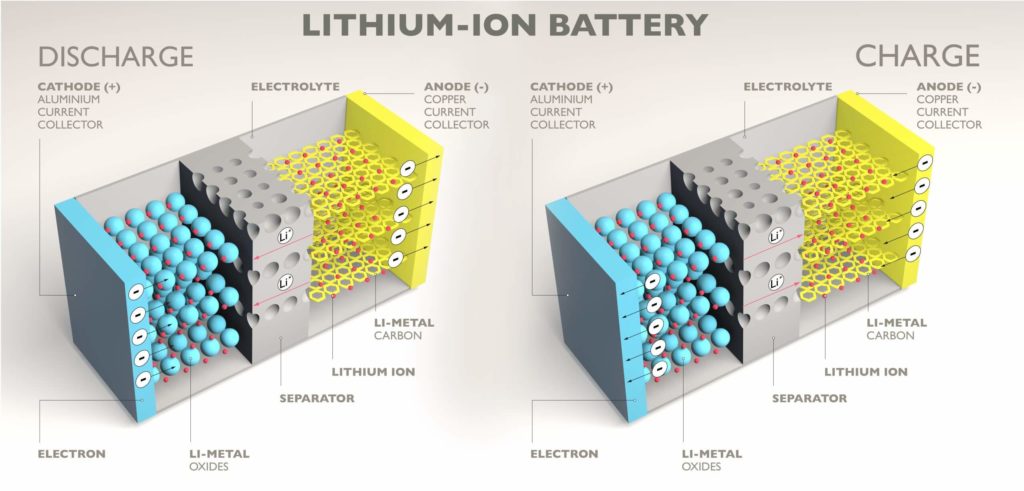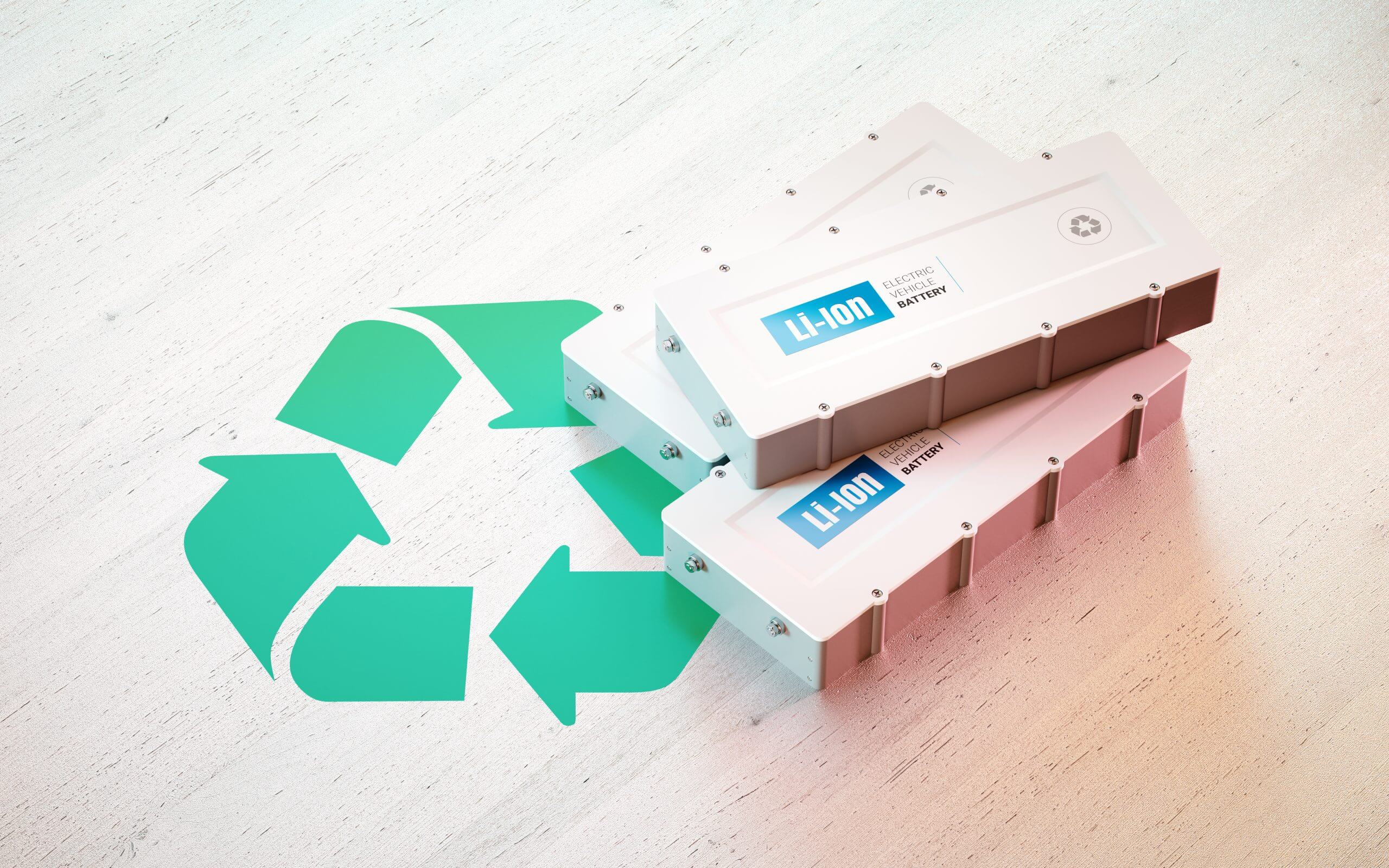Today, there is more and more talk about recycling electric car batteries and reusing them as a business opportunity. Suffice it to say that IDTechEX estimates that by 2030 there will be 6 million end-of-life batteries from electric vehicles with an estimated capacity exceeding 275 GWh per year.
Thus, the enormous opportunities offered by EV batteries for energy storage and the potential for energy storage in photovoltaic parks are evident. Car manufacturers themselves are carrying out projects to recycle EV batteries and among them are Tesla, Renault, Nissan, Audi, Toyota. In Italy, working on the end-of-life of lithium-ion batteries for electric vehicles is the national COBAT consortium. Let’s see what can be recycled and what the second life of electric car batteries can be.
What can be recycled?

After 5-8 years of use, lithium-ion batteries used in electric vehicles degrade, but nevertheless even after 10 years they can be used in other areas with energy storage and less frequent cycling. In addition to reuse, the various components of the batteries and in particular precious metals such as cobalt and nickel can be recycled at competitive costs compared to mining.
As McKinsey shows with the growth of electric vehicles, the energy storage sector powered by used batteries of electric vehicles is emerging, which could exceed 200 GWh by 2030.
“The rapid growth of electric vehicles could provide a market for storage applications with a global value of more than $30 billion by 2030, as second-life batteries from electric vehicles will be useful for a variety of storage applications,” the study points out.
A used electric car battery retains 70-80% of its original capacity and can be used for stationary energy storage before individual components are recycled.
Second life of electric car batteries

As mentioned, the second life of electric car batteries involves their use as energy storage in the renewables sector. A study by the MIT – Massachusetts Institute of Technology in Boston also notes that batteries that can no longer be used for electric vehicles could also be reused for photovoltaics, as back-up batteries for at least a decade.
Think of solar parks and battery systems from repurposed EVs when they are too weak to power the electric car, ornew lithium-ion battery storage systems.In other words, a second life of the EV battery system leads to a reasonable net return on investment as long as they do not cost less than 60% of their original price.
Car companies are already moving in this direction and are working on recycling battery packs or second life to also reduce the CO2 of recycling processes by using electricity from renewable sources. In Italy, there is the activity of COBAT, which deals with the circular economy and collects spent batteries and accumulators, WEEE electronic waste and end-of-life tyres.
For the end-of-life management of lithium-ion batteries and accumulators, sustainable and energy-saving technology is being investigated, optimising recovery as much as possible.
Cobat and the CNR Institute of Chemistry of Organometallic Compounds have patented a process for the hydrometallurgical recovery of black mass (a mixture of lithium, manganese, cobalt and nickel) from lithium batteries. To date, an industrial partner has already been found, who also has an upstream patent for mechanical pre-treatment, and authorisations are being obtained for the pilot testing of a plant, located in Italy, with state-of-the-art technology for the treatment and recovery of lithium accumulators.
In conclusion, the life of the lithium battery does not end when its capacity to power the electric car ends, but continues over time leading to its second life as energy storage. These studies and research are of fundamental importance as the use of electric cars is set to increase and with it the number of spent batteries to be recycled.
